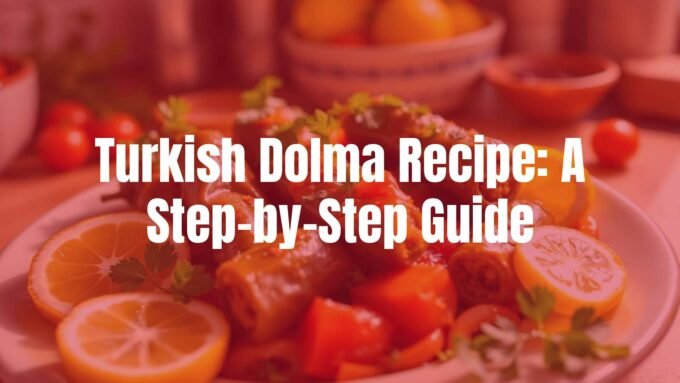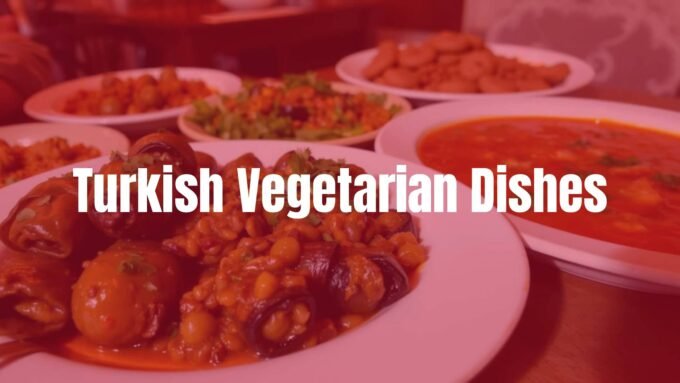Baklava, said as “bah-klah-vah,” is a sweet pastry made from thin layers of phyllo dough, filled with chopped nuts, and covered in honey syrup. You can find baklava in many countries around the Eastern Mediterranean, each area adding its own style. Looking for a true “authentic” baklava recipe means exploring its deep history and local variations, but the result is always a special dessert that takes effort and brings joy to those who eat it.

Many people link baklava to Greek food, but where it started is still argued by food experts. The process of layering dough with nuts and honey goes back to the Assyrian Empire in the 8th century B.C.E. Still, the baklava we know today, with its thin, flaky phyllo, may have come from Turkey during the Ottoman Empire and then spread to Greece, where it picked up new touches. Both Greek and Turkish cultures kept building on food traditions from older empires, making the baklava styles we taste today.
What Is Authentic Baklava?
Real baklava means more than just a sweet treat-it is a recipe passed down through many years and different places. The core parts are crisp phyllo dough, tasty nuts, and sweet syrup. The magic of true baklava is in getting these three elements in just the right balance: crispy and soft, rich and light at the same time. Making baklava takes time and careful steps, but the final result makes it worth the effort.

Where Did Baklava Originate?
No one knows for sure where baklava started. Both Greece and Turkey claim it as their own, and the oldest version of a baked dessert with dough and honey showed up in the Roman Empire. Many believe the style we see now probably developed in Turkey during the Ottoman Empire. Over time, baklava changed and spread across the region, picking up different ingredients and shapes depending on local food customs. The fact that baklava still gets made and enjoyed around the world shows its lasting popularity.
How Does Traditional Baklava Differ from Modern Versions?
Classic baklava keeps things simple, focusing on a few main ingredients, while newer styles might use more flavors or creative decorations. Turkish baklava, sometimes called fistikli baklava, uses pistachios and a syrup of sugar, water, and lemon. This syrup usually isn’t spiced. Middle Eastern baklava, however, often adds rosewater for a flowery scent. Greek baklava mostly uses walnuts and adds cinnamon, with a syrup flavored with orange and more cinnamon.
Today, some baklava recipes mix in other nuts like pecans or almonds, and sometimes add chocolate or fun toppings. Even with these changes, the building blocks (phyllo, nuts, and syrup) stay in place, but the flavors and how it looks can be quite different, depending on the recipe.
What Ingredients Are Needed for Authentic Baklava?
To make real baklava, you need just a handful of important ingredients. Each part-the dough, nuts, and syrup-adds its own taste and texture. Using good quality ingredients is a big help for making baklava that stands out.
Traditional Baklava Nut Choices
The type of nut used plays a big part in the taste. Greek baklava usually uses walnuts mixed with cinnamon. Turkish baklava stands out with the use of pistachios for flavor and color. Some recipes, like Suzy Karadsheh’s, combine different nuts such as pistachios, walnuts, and hazelnuts. Hazelnuts and pecans work well too. Just be sure to chop your nuts coarsely instead of grinding them into a paste, so you keep a good crunch inside the baklava.

Phyllo Dough: Types and Tips
Phyllo dough (also called filo) is what gives baklava its thin, crunchy layers. You can find it frozen in most big supermarkets, usually close to pie crusts. To get phyllo ready, let it thaw slowly in the fridge overnight (for about 12-14 hours). Take it out about an hour before using it so it comes to room temperature. Since phyllo dries out fast, cover it with a slightly damp towel when not working with it. Don’t worry if a sheet rips-a few torn layers doesn’t matter with so many stacked on top of each other. Brushing each layer with melted butter not only adds flavor but also keeps the sheets moist and helps them crisp up well in the oven.
Spiced Syrup: Ingredients and Flavor
The syrup ties the baklava together, giving it sweetness and moisture. A basic baklava syrup uses water, sugar, and honey. Lemon juice is often added to cut the sweetness and stop the syrup from getting gritty. Greek baklava might use a cinnamon sticks and orange peel, while Middle Eastern types add rosewater. Boil the syrup first and then let it cool all the way before you pour it over baked baklava. The syrup and pastry should be different temperatures (cold syrup on hot pastry) for best, crispy results.
Authentic Baklava Recipe: Quick Reference
Baklava may seem hard to make, but with steps and a list of amounts, you can break it down easily. Here are the basic amounts and tools for a classic 9″x13″ pan (makes about 24-30 pieces):
Ingredient List
| Part | Ingredients |
|---|---|
| Nut Filling |
|
| Phyllo Dough |
|
| Honey Syrup |
|
Feel free to adjust the spices to suit your taste-these are just starting guidelines.
Tools You Need
- 9″x13″ baking pan
- Food processor (or sharp knife for chopping nuts)
- Small saucepan (for syrup and melting butter)
- Pastry brush (to butter phyllo)
- Sharp knife (for cutting pieces)
- Two clean, damp kitchen towels (covering phyllo)
- Measuring cups and spoons
Some people also like using a spray bottle for butter and cupcake liners for serving.

How to Make Authentic Baklava: Step-by-Step
Making baklava takes time, but each stage has clear steps. Here’s how you do it:
1. Make the Syrup
Prepare the syrup before anything else so it has time to cool. In a saucepan, mix sugar, water, honey, lemon juice, and any extra flavors (like cinnamon or orange peel). Bring to a boil, stirring until the sugar melts. Lower the heat and let it simmer for about 15-25 minutes until thicker. Remove any spices you added. Set the syrup aside to cool.
2. Mix the Nuts
While the syrup cools, chop the nuts using a food processor or by hand. Mix together the chopped nuts, sugar, cinnamon, and any cloves you wish to use. Stir well so the mix is even. Set aside.
3. Layer the Phyllo and Nuts
Heat your oven to 350°F (175°C). Butter your pan. Lay out the phyllo dough between two damp towels to keep it from drying. Place a sheet at the bottom of the pan and brush generously with butter. Repeat this for about 8-10 sheets. Spread half the nut mixture on top. Then layer a few more buttered sheets (about 2-5), add the rest of the nuts, and finish with more phyllo layers (another 8-10), always brushing with butter. The very top should be well-buttered.

4. Cut and Bake
With a sharp knife, slice the unbaked baklava into diamonds or squares, cutting all the way to the pan’s bottom. This helps avoid messy breaks after it is baked. Bake for 45-60 minutes until deep golden brown and crisp.
5. Pour Syrup on Hot Baklava
Take the baklava out of the oven and pour the cold syrup slowly and evenly over it while the pastry is still hot. This step keeps the top layers crisp and stops the baklava from getting too wet. Let it rest for several hours or overnight so the syrup soaks in. Top with extra chopped pistachios if you like before serving.

Helpful Tips for Perfect Baklava
Baklava is simple to make but getting it just right takes some experience. Here are some pointers:
Working with Phyllo Dough
Phyllo dough can tear easily. Keep all unused sheets covered with a slightly damp towel. If you rip a piece, just patch it or keep going. The melted butter glues everything together, and small rips won’t show in the end. Some people use a spray bottle to gently butter the sheets without tearing them.
Getting Crisp, Golden Layers
Adding enough butter is the secret to crisp, flaky layers. Butter each sheet fully for best height and crunch. Bake at 350°F and watch until the top is a deep golden color.
Keeping Baklava from Getting Soggy
Always pour cooled syrup on piping hot baklava. This helps the layers stay crisp and lets the syrup soak in. Hot syrup on hot baklava leads to floppy pastry. Get your syrup ready in advance if you can.
Boosting Flavor and Avoiding Common Mistakes
You can add a bit of ground cloves or orange extract to the syrup for extra flavor. Lemon juice keeps the syrup smooth. Don’t grind the nuts too finely-a coarse chop gives the best texture. Always cut the raw baklava before baking for clean slices and even syrup spread. Wait several hours or overnight for the syrup to soak fully-you’ll get better flavor and texture this way.
How to Store, Freeze, and Serve Baklava
Once you make your baklava, storing and serving it correctly keeps it tasting great.
Storage and Shelf Life
Baklava keeps well for up to two weeks thanks to the sugar and honey. Store at room temperature in an airtight container, ideally glass. Cover with a clean towel for crispness. Refrigerating it can make it hard and chewy, so room temperature is better. When baklava goes dry, it has reached the end of its storage window.
Freezing and Thawing
Baklava freezes well for three to four months. Let it cool before wrapping tightly in plastic wrap and storing in a freezer-safe bag or container. You can freeze whole trays, too. Thaw overnight in the fridge, or on the counter for a few hours-then it’s ready to eat.
Serving Suggestions
Baklava tastes best at room temperature. Sprinkle extra chopped pistachios on top for taste and looks. You can serve it with whipped cream or ice cream for a treat, and it goes well with tea or coffee. Place each piece in a cupcake liner for special occasions.
Frequently Asked Questions About Authentic Baklava
Can I Use Different Nuts?
Yes! While traditional recipes use walnuts or pistachios, you can also try hazelnuts, pecans, or even almonds. Keep the nuts in small pieces, not ground too finely, for proper texture. For nut allergies, some people try options like sesame seeds, coconut, or dried fruit, but these change the flavor and feel of classic baklava.
How Long Does Baklava Last?
Baked baklava lasts up to two weeks when kept in a sealed container at room temperature. Many say it tastes better on the second day since the syrup has spread through all the layers. For longer keeping, freeze it up to 3-4 months.
What’s the Difference Between Greek and Turkish Baklava?
| Greek Baklava | Turkish Baklava |
|---|---|
| Uses walnuts and more cinnamon, syrup flavored with orange/cinnamon | Mainly pistachios, syrup made from water, sugar, lemon with little or no spice |
| Often thicker nut layers and heavier syrup flavors | More nuts in the filling, thinner phyllo top layer, cleaner simple flavor |
Both styles are tasty, but the choice of nuts and syrup flavors set them apart.
















Leave a comment